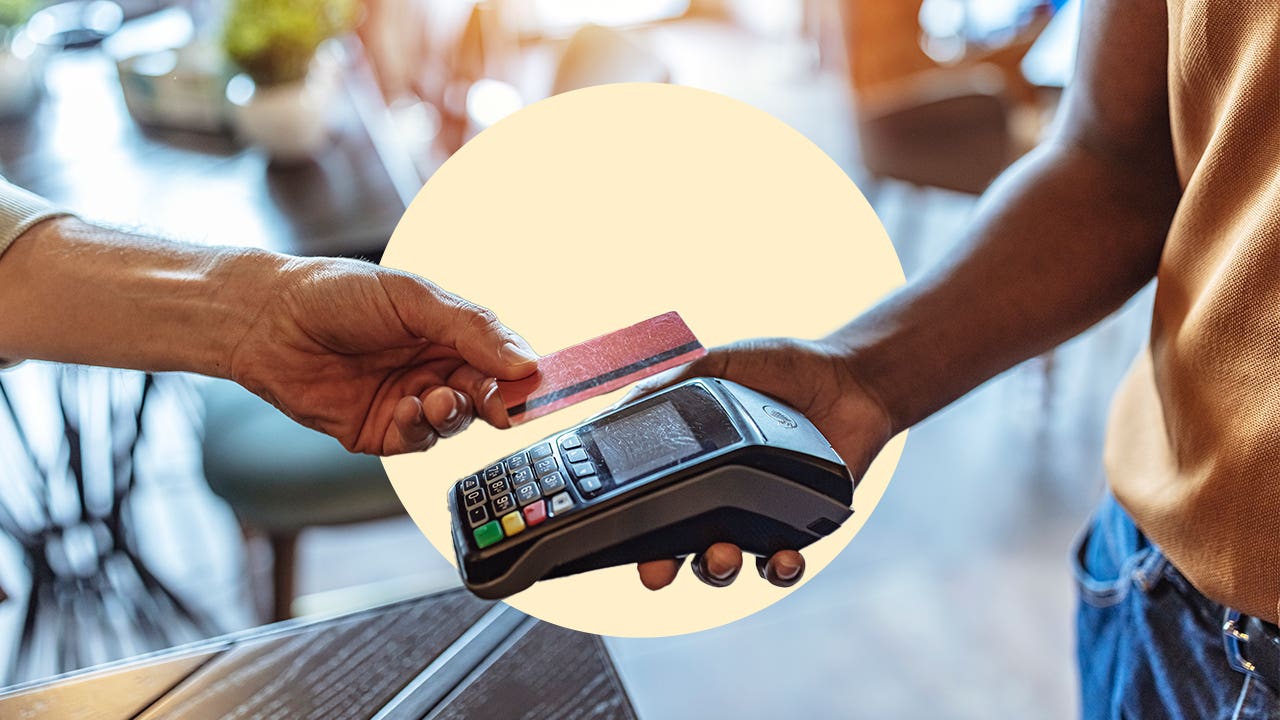Credit card issuers that offer contactless cards

Key takeaways
- Contactless payment technology, also sometimes called tap-to-pay technology, works similarly to chip credit cards by providing a one-time code for each transaction to protect personal information.
- Most major credit card issuers now offer contactless credit cards because they can make transactions faster and safer — and some issuers are even automatically issuing them as replacement cards.
- Users can also make contactless payments through mobile wallets, an increasingly popular option.
Nearly 4 out of every 5 respondents globally (79 percent) reported using contactless payments, according to a worldwide consumer study done by Mastercard in 2020. This number is only expected to grow, especially when it comes to shopping at places like grocery stores and pharmacies.
It’s clear that consumers have grown to love using touch-free payment options, and credit card issuers are responding by increasingly providing this option. Not only do contactless credit cards let users pay for purchases at the point of sale without dipping their card in a terminal or handing it over to a cashier, but they also let them skip entering a PIN or signing a receipt.
As a result, paying with a contactless card is often faster than paying with traditional plastic. American Express also notes that tap-to-pay transactions are more reliable and safer than many other forms of payment.
What are contactless payments?
Contactless payments are a wireless option to pay for goods or services without having to physically insert a card into a terminal. They are also referred to as tap-to-pay or touchless payments. Security for contactless payments works similarly to chip credit cards, according to Visa. This is because each transaction comes with a one-time code that protects your credit card number and personal information.
How to use a contactless credit card
To pay with a contactless credit card, all you have to do is hold your card a few inches from the contactless symbol on a payment terminal. Once you receive confirmation that your purchase has been approved, you can collect your receipt and go.
Is your card contactless?
Many more credit cards are contactless than people realize, but if you’re unsure about your particular credit card, just look for the contactless symbol on the front of your card. The contactless symbol is reminiscent of the WiFi symbol, with four arched lines fitted next to one another.

Keep in mind that if your credit card isn’t contactless, you can also input your credit card information into mobile wallet payments and pay without contact that way. Many customers turn to mobile payment apps like Apple Pay and Samsung Pay to cover more purchases since these apps let you pay by using your mobile device.
To do this, all you have to do is download the mobile wallet app you want to use and connect your credit card to your account. However, Apple Pay is already downloaded on your smartphone under the Wallet app if you use an iPhone. From there, you can use your mobile device to make purchases, and the transaction will be contactless (provided the payment terminal has the capability).
Which credit card issuers offer contactless credit cards?
Nearly all major credit card issuers offer contactless credit cards by now, but some are slowly rolling them out as replacement cards when a customer’s current card expires. Here’s how each of the major card issuers are handling contactless payments:
American Express
American Express notes that most of its credit cards are contactless already, but they’re continuing to migrate more credit cards to contactless over time. On the Amex website, you can clearly see that The Platinum Card® from American Express, Delta SkyMiles® Blue American Express Card and American Express® Gold Card feature the contactless symbol, and that’s just a start.
American Express credit cards can be used for contactless payments of $250 or less.
Bank of America
Bank of America has also focused on offering contactless credit cards and debit cards, and all of the credit cards on its website currently display the contactless payment symbol on the front.
This means that its top cards offer this technology, including the Bank of America® Unlimited Cash Rewards credit card and Bank of America® Premium Rewards® credit card, to name a few.
Capital One
Capital One notes that many of its credit cards already feature contactless technology, including popular cards like the Capital One Venture X Rewards Credit Card and Capital One Quicksilver Cash Rewards Credit Card.
If you have an older version of one of these cards that isn’t updated with contactless technology, you can call the number on the back of your card and ask for a replacement.
Chase
Chase is very direct when it comes to which of its credit cards are currently contactless. Cards offered with contactless capabilities include the Chase Freedom Unlimited®, Chase Sapphire Preferred® Card, Chase Sapphire Reserve® and 20 other options — some of which are co-branded with airlines or hotels.
If you want to replace your Chase card with a contactless version, you can do so on this credit card replacement page.
Citi
Citi says the majority of its credit cards are already contactless, including the Citi Double Cash® Card and Citi Custom Cash® Card.
There is no spending limit on contactless purchases made with Citi credit cards other than your credit limit.
Discover
Discover has been offering contactless cards since 2019, however, the contactless symbol can be found on the back of the card rather than the front. You can request a contactless version of your Discover card by logging in to your account. They also note that purchases over $100 may require a signature — even if you pay with a contactless credit card at a contactless terminal.
U.S. Bank
The contactless payment option is available for newly issued debit and credit cards offered by U.S. Bank. Check the front for the contactless indicator on the front of your card. You can also download the U.S. Bank Mobile App and input your card information to use as a form of mobile payment.
Wells Fargo
Wells Fargo began offering contactless cards in early 2019, and now all newly issued cards include the feature. You can request a replacement card by calling the number on the back of your Wells Fargo card.
Some of the more popular Wells Fargo cards with this feature include the Wells Fargo Active Cash® Card and Wells Fargo Reflect® Card.
The bottom line
If you want a cleaner, more secure, time-saving method for paying when you shop, contactless credit cards can help. You can pay just by holding your card a few inches from a contactless terminal, and your purchases will be speedier and safer as a result.
If you don’t have a contactless credit card, we suggest reaching out to your card issuer to see if you can receive a new card with contactless technology in the mail. If not, consider signing up for one of today’s best credit cards that feature this technology and potentially even better perks and rewards than what you have now.
The Bank of America content in this post was last updated on December 12, 2024.
You may also like

6 ways to make money from gift cards

The best Ally Bank credit cards





